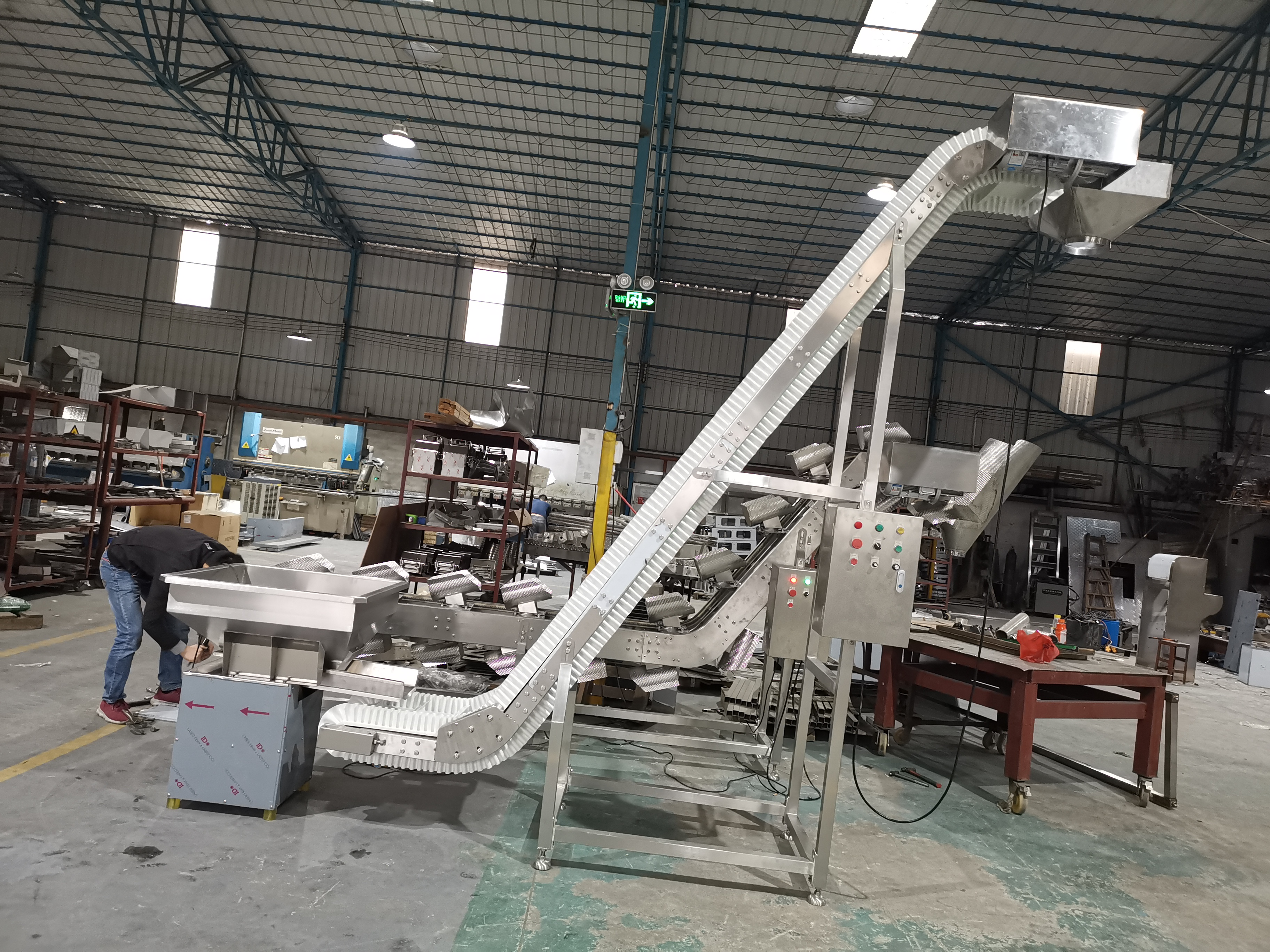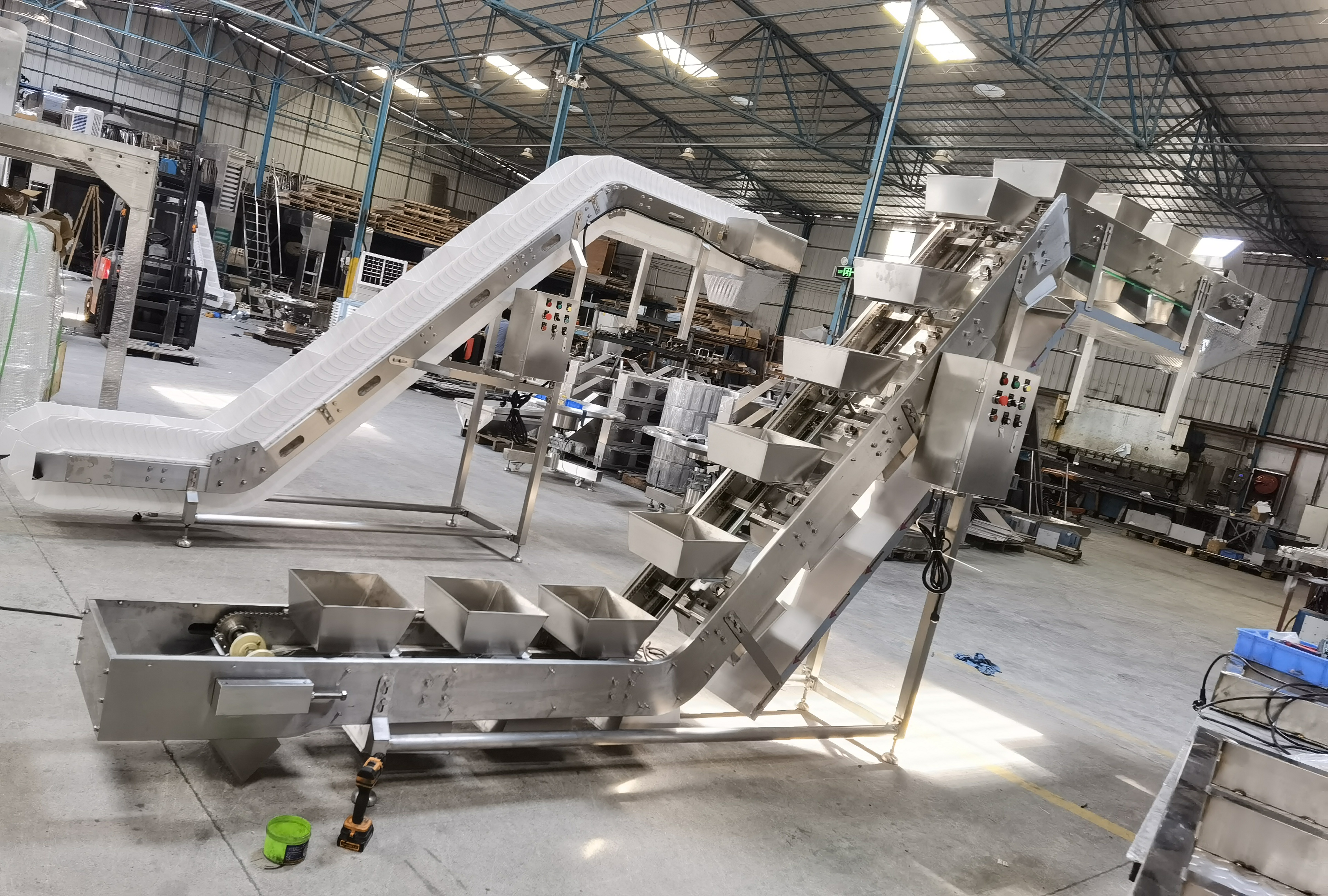Belt conveyors are widely used in the food packaging and transportation industry because of their large conveying capacity, simple structure, convenient maintenance, low cost, and strong versatility. Problems with belt conveyors will directly affect production. Xingyong Machinery will show you the common problems and possible causes in the operation of belt conveyors.

Common problems and possible causes of belt conveyors
1. The conveyor belt runs off the roller
Possible reasons: a. The roller is jammed; b. The accumulation of scraps; c. Insufficient counterweight; d. Improper loading and sprinkling; e. The roller and conveyor are not on the center line.
2. Conveyor belt slipping
Possible reasons: a. The supporting roller is jammed; b. The accumulation of scraps; c. The rubber surface of the roller is worn; d. Insufficient counterweight; e. Insufficient friction between the conveyor belt and the roller.
3. The conveyor belt slips when starting
Possible reasons: a. Insufficient friction between the conveyor belt and the roller; b. Insufficient counterweight; c. The rubber surface of the roller is worn; d. The strength of the conveyor belt is insufficient.

4. Excessive elongation of the conveyor belt
Possible reasons: a. Excessive tension; b. Insufficient strength of the conveyor belt; c. Accumulation of scraps; d. Excessive counterweight; e. Asynchronous operation of the dual-drive drum; f.The wear of Chemical substances, acid, heat, and surface roughness
5. The conveyor belt is broken at or near the buckle, or the buckle is loose
Possible reasons: a. The strength of the conveyor belt is not enough; b. The diameter of the roller is too small; c. Excessive tension; d. The rubber surface of the roller is worn; e. The counterweight is too large; f. There is a foreign matter between the conveyor belt and the roller; g. Double drive the drum runs asynchronously; h. The mechanical buckle is improperly selected.
6. Fracture of vulcanized joint
Possible reasons: a. Insufficient strength of the conveyor belt; b. The diameter of the roller is too small; c. Excessive tension; d. There is foreign matter between the conveyor belt and the roller; e. The dual-drive rollers are operating asynchronously; f. Improper buckle selection.

7. The edges of the conveyor belt are severely worn
Possible reasons: a. Partial load; b. Excessive tension on one side of the conveyor belt; c. Improper loading and sprinkling; d. Damage caused by chemicals, acids, heat and rough surface materials; e. The conveyor belt is curved; f. Accumulation of scraps; g. Poor performance of vulcanized joints of conveyor belts and improper selection of mechanical buckles.
Solutions to common problems of belt conveyors
1. The conveyor belt is curved
On the whole core conveyor belt that will not happen, pay attention to the following points for the layered belt:
a) Avoid squeezing the layered conveyor belt;
b) Avoid storing the layered conveyor belt in a humid environment;
c) When the conveyor belt is running in, the conveyor belt must be straightened first;
d) Check the entire conveyor system.
2. Poor performance of conveyor belt vulcanized joints and improper selection of mechanical buckles
a) Use a suitable mechanical buckle;
b) Re-tension the conveyor belt after running for a period of time;
c) If there is a problem with the vulcanized joint, cut off the joint and make a new one;
d) Observe regularly.
3. The counterweight is too large
a) Recalculate and adjust the counterweight accordingly;
b) Reduce the tension to the critical point and fix it again.
4. Damage caused by chemical substances, acids, alkalis, heat, and rough surface materials
a) Choose conveyor belts designed for special conditions;
b) Use sealed mechanical buckle or vulcanized joint;
c) The conveyor adopts measures such as rain and sun protection。
5. Asynchronous operation of dual-drive drum
Make proper adjustments to the rollers.
6. The conveyor belt is not strong enough
Because the center point or the load is too heavy, or the belt speed is reduced, the tension should be recalculated and the conveyor belt with suitable belt strength should be used.
7. Edge wear
Prevent the conveyor belt from deviating and remove the part of the conveyor belt with severe edge wear.
10. The roller gap is too large
Adjust the gap so that the gap between the rollers should not be greater than 10mm even when fully loaded.

11. Improper loading and material leakage
a) The feeding direction and speed should be consistent with the running direction and speed of the conveyor belt to ensure that the loading point is at the center of the conveyor belt;
b) Use appropriate feeders, flow troughs and side baffles to control the flow.
12. There is a foreign body between the conveyor belt and the roller
a) Correct use of side baffles;
b) Remove foreign matter such as scraps.
The above are the common problems of belt conveyors and related solutions. In order to extend the service life of the conveyor equipment, and for the equipment to perform better production operations, it is necessary to carry out regular maintenance on the belt conveyor, so that it can truly Improve production efficiency and increase economic benefits.
Post time: Sep-03-2021
